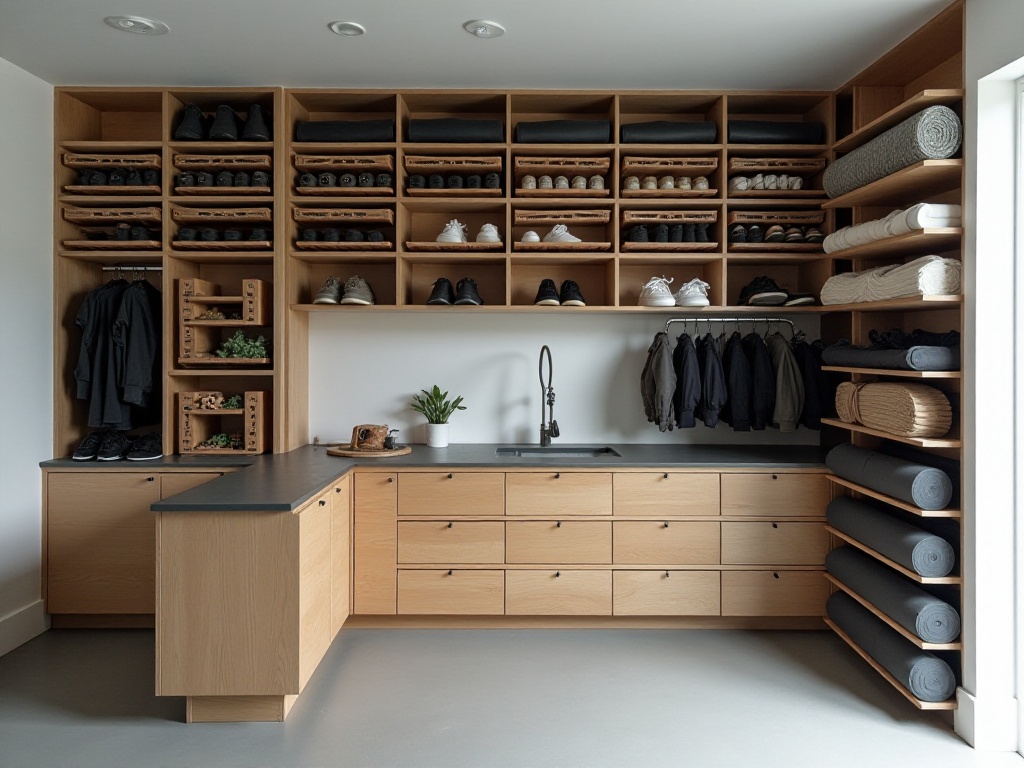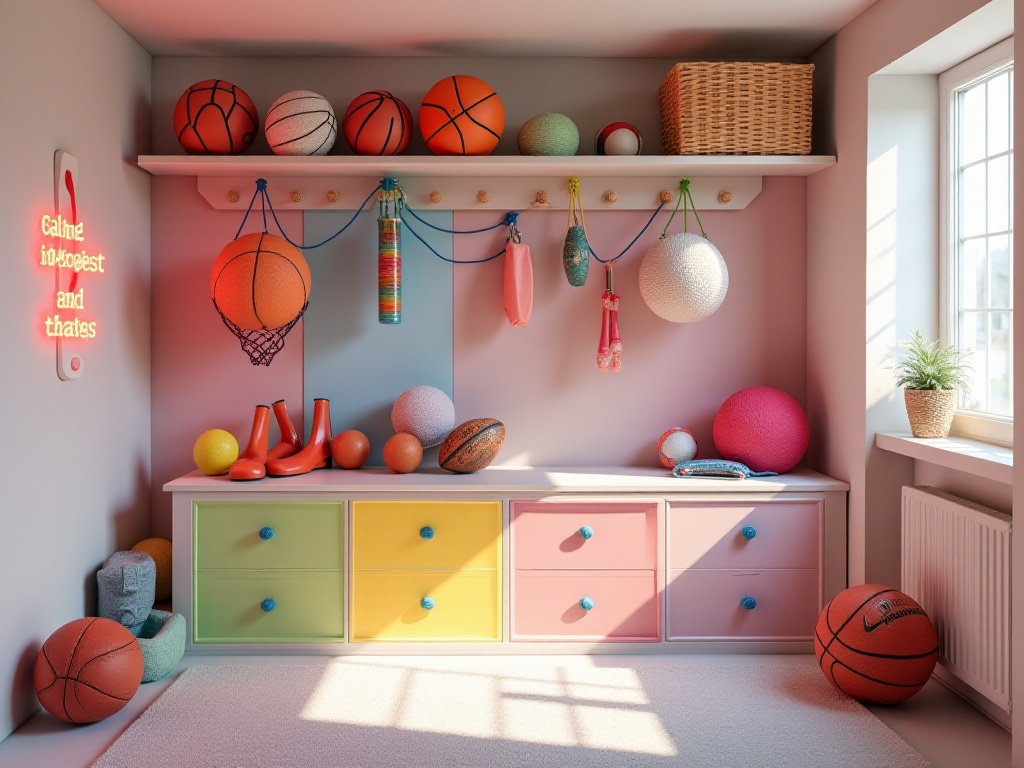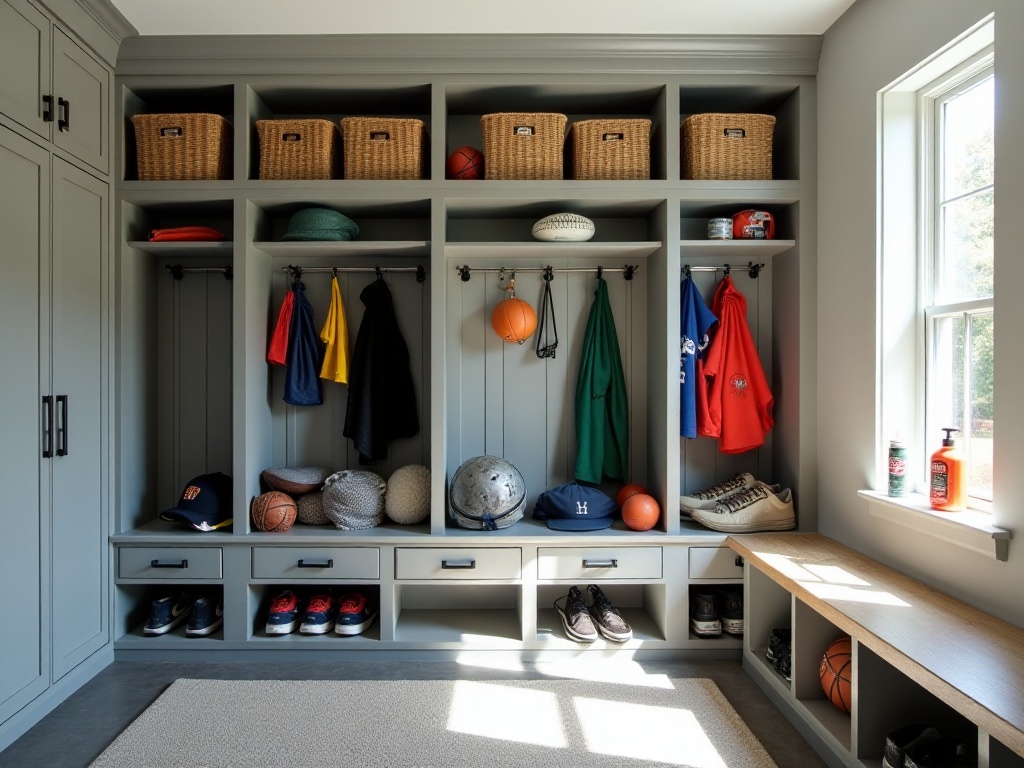Introduction
It's really frustrating! Every time I want to exercise, my home feels like a maze. The basketball is under the bed, the yoga mat is rolled up in the closet, dumbbells are hidden in some corner, and the jump rope took forever to find behind the bookshelf. As a fitness enthusiast, I've deeply experienced this pain. But after continuous exploration and trials, I finally found an ultra-practical storage solution that I want to share with everyone!
Space Planning
When it comes to space planning, it's truly a science. I remember when I first started organizing, it was an absolute disaster with sports equipment scattered throughout the living room, bedroom, and balcony - just looking at it was stressful. After some research, I discovered the biggest problem was not fully utilizing vertical space.
Now my walls are equipped with a super cool mounting system that has completely freed up floor space. All kinds of sports balls have their dedicated spots - basketball, tennis, baseball, and gloves are neatly hung on the wall, looking like a piece of art! The best part is everything's within arm's reach, no more rummaging through drawers and cabinets like before.
The ceiling was like discovering a new continent! I installed a set of amazing sliding storage boxes up there for equipment that isn't used frequently. Each box is labeled - red for winter sports gear, blue for summer equipment, and yellow for various protective gear. This design doubled my storage space while keeping everything super tidy!
I also created a mini fitness area in one corner of the living room. The dumbbell rack, yoga mat holder, and resistance band hooks are all installed on the same wall, creating a complete exercise zone. This design not only looks professional but also motivates me to work out - seeing it first thing when I get home means there's no excuse for laziness.
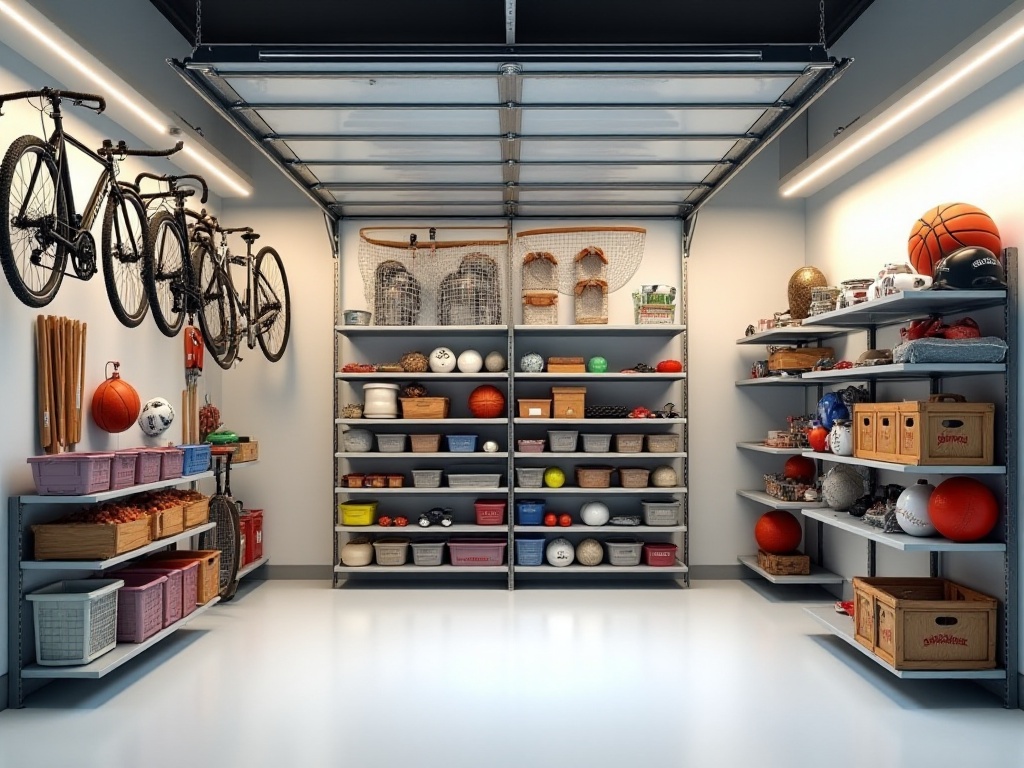
Smart Storage
Honestly, my car trunk used to be a black hole - things would disappear the moment they went in. Now I have several super practical collapsible storage boxes, with different sports equipment categorized - large equipment on the left, small items on the right, and a temperature-controlled compartment in the middle for energy bars and sports drinks. The advantage of this design is that whether I'm going to play ball or hit the gym, everything I need is clearly visible, and I'll never arrive at my destination only to find I've forgotten something.
Drawer organization is an art. I categorize workout clothes by different types of sports - running, yoga, and ball sports are all separated. Protective gear is also organized by body part, with dedicated compartments for wrist guards, knee pads, and ankle supports. This organization not only keeps clothes neat and orderly but more importantly, helps maintain equipment in optimal condition. From my observation, equipment stored this way lasts at least a year longer than randomly stored items.
I've also set up a "quick access zone" by the entrance for daily essentials like running shoes, water bottles, and towels. This makes it super convenient to grab things when heading out for exercise and put them back immediately upon return, preventing new chaos.
Creative Modifications
Speaking of DIY, I've really let my creativity shine. My proudest creation is a ball storage rack made from plywood and elastic cords. This rack cost less than $200 but perfectly solved all ball storage issues. I used special elastic cords that automatically adjust to different ball sizes, making it super convenient to store and retrieve balls.
Recently, I made another cool modification by converting a regular clip rack into a multi-functional storage rack. Now this rack can hold tennis rackets, badminton rackets, my golf clubs, and fishing rods. The key is that this modification was super simple - just adding a few adjustable hooks and straps to the existing clips. It only cost about a hundred dollars but is incredibly practical.
I also made a simple yoga mat storage rack using PVC pipes, with ventilation holes drilled in. This allows the yoga mats to be stored vertically to save space while preventing mold. Several of my friends have copied this little invention - proves that creativity is more valuable than money!
Daily Maintenance
Storage is just the first step; daily maintenance is essential to keep sports equipment in good condition. I've developed a habit of checking equipment weekly, spending about half an hour inspecting various items for wear, looseness, or other issues. This habit has saved me a lot of money by identifying and addressing problems early, avoiding unnecessary replacements.
Moisture and mold prevention is really important - I learned this the hard way. Previously, I lost an expensive set of hockey equipment worth thousands due to neglecting this issue. Now I pay special attention to this aspect, making sure equipment is completely dry before storage, and I place dehumidifier packets in all storage boxes to maintain a dry environment.
I've also created a small file for each piece of equipment, recording purchase date, frequency of use, and maintenance records. While this might seem tedious, it's super helpful for timely replacement and maintenance. For example, with running shoes, I track the mileage and know it's time to consider replacement at 500 kilometers.
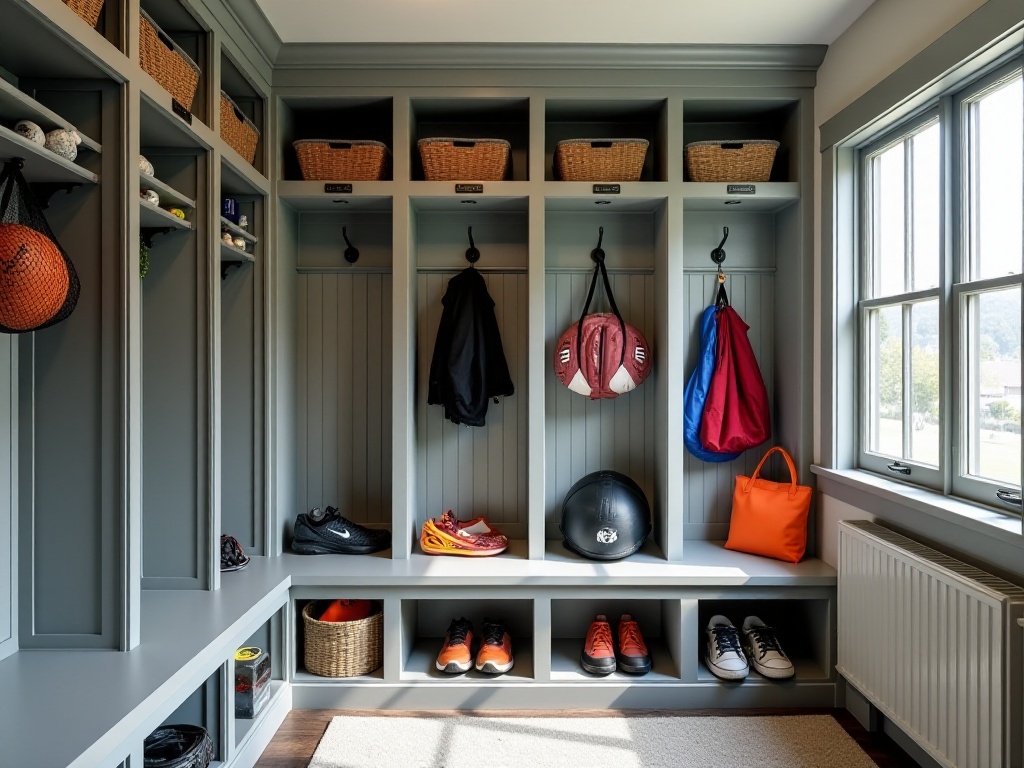
The Art of Storage
To maintain long-term organization, the key is establishing a scientific storage system. My experience is to arrange items based on frequency of use. Daily equipment like running shoes and yoga mats should be in the most accessible places. Items used once or twice a week can go in secondary locations. Seasonal equipment like ski gear can be stored in high places or storage boxes.
Before organizing, it's essential to declutter first. I clean out my equipment every three months, getting rid of damaged or unused items. Sometimes I give them to friends in need, sometimes I sell them on second-hand platforms. This not only keeps the space tidy but also ensures the equipment remains valuable.
I've also incorporated some smart elements into my storage system. For example, I use a label printer to create QR codes for storage boxes - one scan shows what's inside and when maintenance is needed. I also use mobile apps to track usage for some equipment, helping better plan replacement and maintenance schedules.
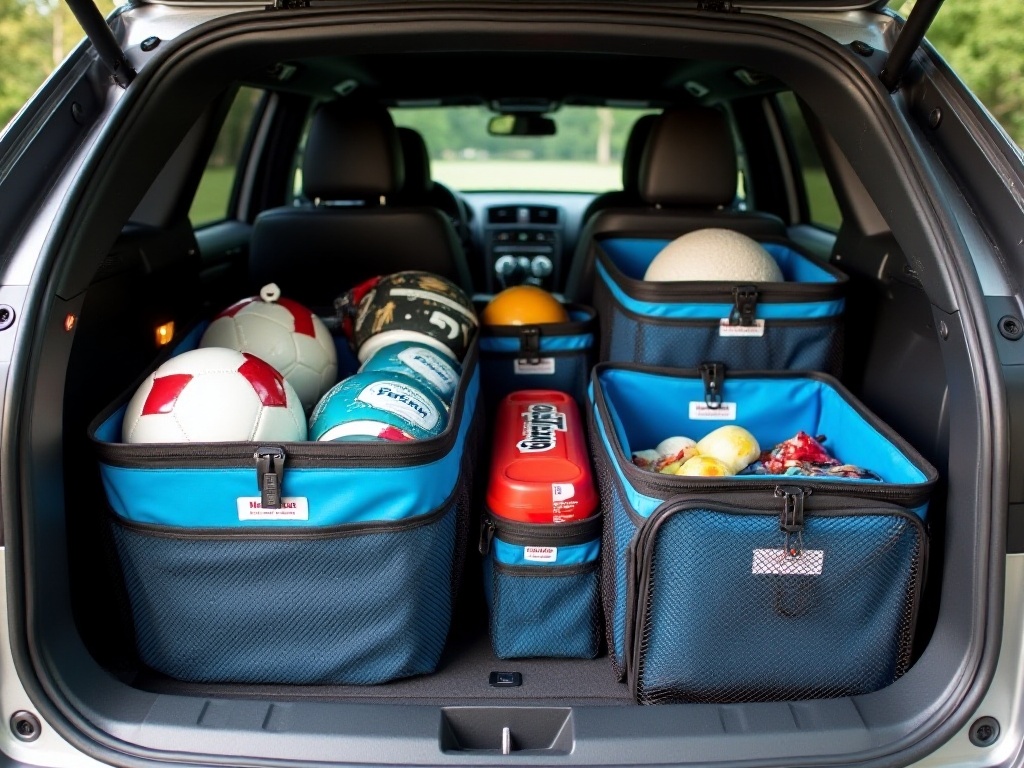
Final Thoughts
Honestly, this storage solution might seem complicated, but it really comes down to two core principles: adapting to your space and maximizing utility. Every home is different, with varying space sizes and budgets affecting specific implementation. But as long as you grasp these two principles, I believe you can find the storage method that works best for you.
Now every time I walk through my door and see my neatly organized sports equipment, it brings me joy. Plus, because everything is so well-organized, I exercise more frequently than before. I sincerely hope these experiences can help you create an exercise space that excites you.
If you have any unique storage tips, feel free to share them in the comments! Let's create our own fitness spaces together!
Related articles


